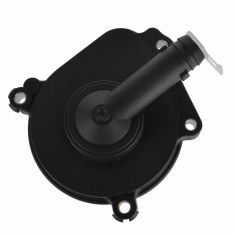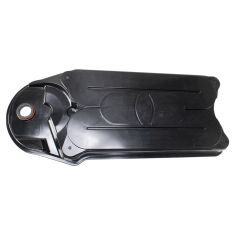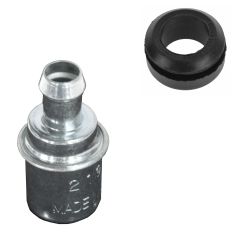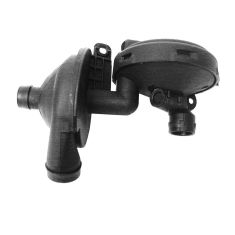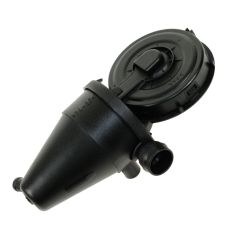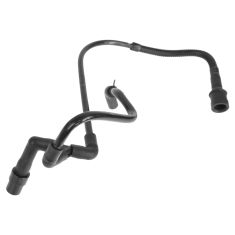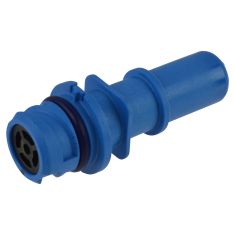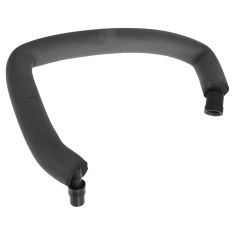PCV Valve & Breather Hoses
-
-
- Air Deflectors & Valance Panels
- Battery Trays & Related
- Body Panels
- Bumpers & Related - Front & Rear
- Convertible Tops, Soft Tops, & Parts
- Decal & Stripe Kits
- Emblems & Nameplates
- Engine Compartment Trim
- Frame Parts & Bushings
- Fuel Door Parts
- Fuel Tank Filler Neck
- Grille
- Header Panel
- Hood & Hatch Lift Supports
- Hood Latch & Catch Brackets
- Hood Release Cable
- Jack Pads
- Radiator Supports
- Rust Repair Panels
- Splash Shields & Fender Liners
- Tailgate Cables
- Tailgate Hinges & Related
- Weatherstripping
-
- Car Covers
- Exterior Lighting
- Exterior Parts & Accessories
- Exterior Safety & Security
- Exterior Storage
- Fender Flares
- License Plate Brackets & Frames
- Mud Flaps & Splash Guards
- Nerf Bars, Side Steps, Running Boards
- Radio Antenna
- Rain Deflectors
- Roll Bars, Light Bars, & Related
- Roof Rack
- Skid Plates
- Spare Tire Carriers & Related
- Spare Tire Covers
- Tire Care
- Tonneau Covers
- Tow Hooks & D-Shackles
- Towing Accessories
- Trailer Hitch & Components
-
- Accelerator Pedal Pad
- Auto Carpet
- Brake Pedal Pad
- Clutch Pedal Pad
- Console Parts
- Dash Pad Cover
- Dash Vents
- Floor Mats & Liners
- Horns & Horn Parts
- Interior Parts & Accessories
- Mirror - Interior Rear View
- Seat Cover and Sets
- Seat Heater Kits
- Seat Parts and Accessories
- Sun Visors & Related
- Trunk & Cargo Parts
-
- Accelerator Pedals & Sensors
- Alarms, Control Modules, & Remote Start
- Cruise Control Switch & Lever
- Electrical Parts
- Hazard Switch
- Ignition Key Lock Cylinder
- Ignition Switch
- Keyless Entry Remote & Related
- Neutral Safety Switch
- Parking Assist Cameras & Monitors
- Power Mirror Switch
- Power Seat Switches
- Power Window Switch
- Radio, Navigation, Entertainment
- Reverse Light Switch
- Trunk Release & Lock Solenoids
- Turn Signal Switches and Levers
- Windshield Wiper Switch
-
- Idler Arm
- Pitman Arm
- Power Steering Hoses
- Power Steering Oil Cooler
- Power Steering Pressure Sensor
- Power Steering Pump
- Power Steering Pump Cooling Fan
- Power Steering Pump Pulley
- Power Steering Pump Reservoir
- Steering Dampers
- Steering Knuckles and Spindles
- Steering Rack and Gear Boxes
- Steering Shafts & Couplers
- Steering Wheels & Column Parts
- Tie Rods & Adjusting Sleeves
-
-
-
-
53
6
10
10
-
Notify When Available
Replaces Mercedes Benz Engine Crankcase Vent Valve DIY Solutions FLT00143
Brand: DIY Solutions - FLT00143$29.95Save 21%List $37.95 Save $8.00Brand: DIY Solutions - FLT00143$29.95Save 21%List $37.95 Save $8.00 -
Notify When Available$74.95Save 29%List $105.95 Save $31.00Brand: TRQ - EFA93525$74.95Save 29%List $105.95 Save $31.00
-
Notify When Available$35.45Save 21%List $44.95 Save $9.50
Replaces PCV Valve DIY Solutions FLT00181
Brand: DIY Solutions - FLT00181$35.45Save 21%List $44.95 Save $9.50 -
Notify When Available$34.95Save 15%List $40.95 Save $6.00Brand: TRQ - ESA35958$34.95Save 15%List $40.95 Save $6.00
-
Notify When Available
Replaces BMW 323i 328i 328iS 528i M3 Z3 PCV Valve DIY Solutions FLT00174
Brand: DIY Solutions - FLT00174$34.95Save 34%List $52.95 Save $18.00Brand: DIY Solutions - FLT00174$34.95Save 34%List $52.95 Save $18.00 -
Notify When Available$28.32Save 54%List $60.95 Save $32.63Brand: TRQ - ENA34180$28.32Save 54%List $60.95 Save $32.63
-
Notify When Available$17.09Save 64%List $47.95 Save $30.86Brand: Ford OEM - XL3Z-6C324-GA$17.09Save 64%List $47.95 Save $30.86
-
Notify When Available$25.45Save 27%List $34.95 Save $9.50Brand: Mopar - 53030850$25.45Save 27%List $34.95 Save $9.50
-
Notify When Available$29.95Save 14%List $34.95 Save $5.00Brand: Motorcraft - EV269$29.95Save 14%List $34.95 Save $5.00
-
Notify When Available$62.95Save 30%List $89.95 Save $27.00Brand: Ford OEM - XL3Z-6C324-HA$62.95Save 30%List $89.95 Save $27.00
loading...
Choose the Make of Your Vehicle
